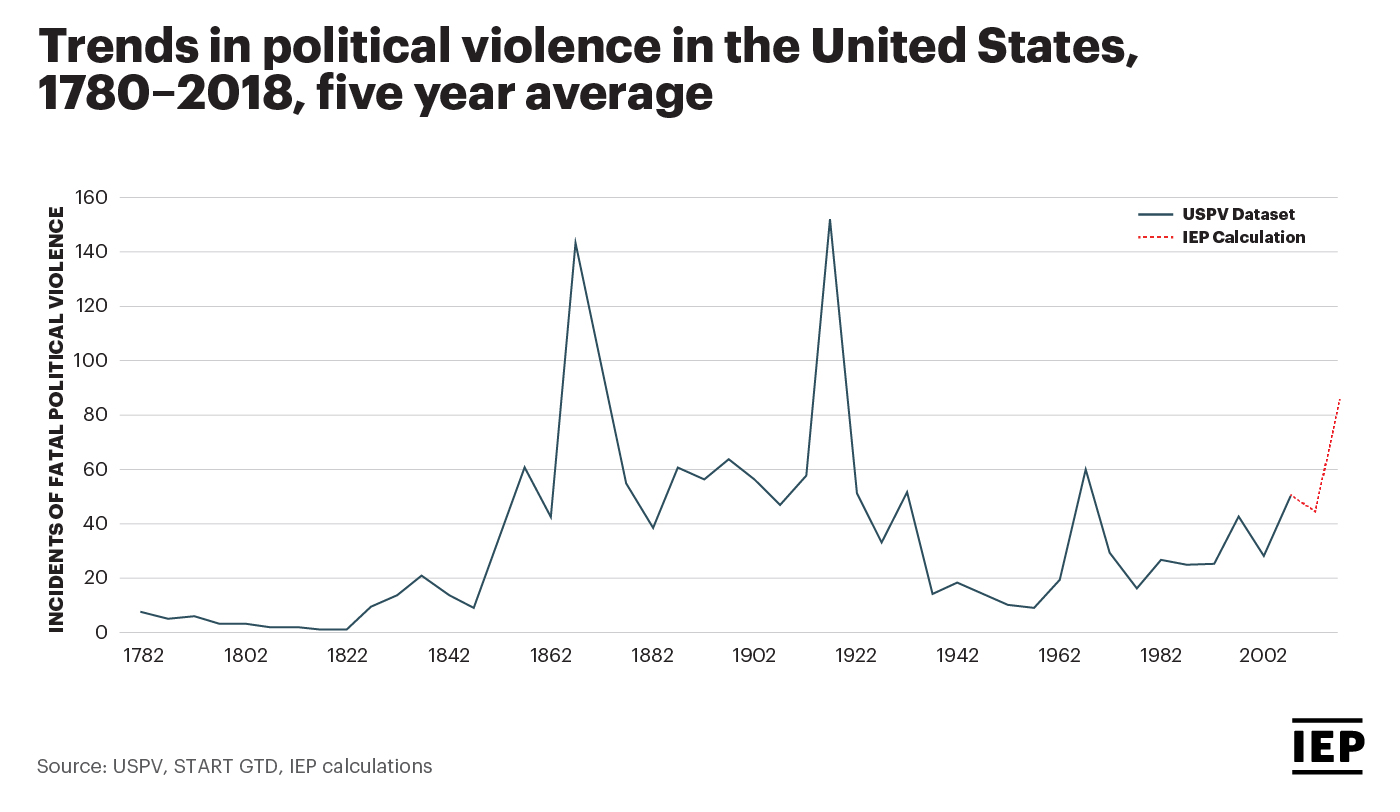According to the Global Terrorism Index 2019, data on political violence in the United States (US) suggests an increase in far-right terrorism.
This and other forms of extremism are part of a broader cycle of increased political violence. In fact, political violence has occurred approximately every 50 years for the past two centuries.
Significant socioeconomic and cultural unrest marked all of these periods, particularly over the issues of group grievances and labour relations.
According to the Institute for Economics and Peace (IEP), there are two reasons why this cycle reoccurs every 50 years.
Firstly, there are specific deteriorations in certain aspects of Positive Peace, which make the political climate especially susceptible to an outbreak of violence.
Secondly, there are the dynamic aspects of violent conflict, in which violent activity becomes contagious and increases rapidly. Consequently, resources devoted to combatting violent conflict increase. Thus, over time, popular moods turn against conflict and towards reconciliation.
Positive Peace is the attitudes, institutions, and structures that help build and maintain peaceful societies. A fall in Positive Peace greatly increases the risk of instability and violence.
IEP’s Positive Peace Index identifies factors that are most strongly correlated with an absence of violence. 24 indicators (across eight domains) help measure the Positive Peace Index.

At times of extreme political and cultural polarisation, as levels of Positive Peace deteriorate, the likelihood of an increase in violence increases. As a result, individuals and groups who are ideologically disposed to violence become more likely to carry out attacks.
Which individuals are more likely to be radicalised? This depends on the distance in time from previous cycles of violence.
The cultural memory of the impact of previous waves of violence gets lost. Thus, leading to a period where violence is more attractive, and exposure to violence is more likely to radicalise individuals.
Many Positive Peace indicators in the West have decreased noticeably over the past decade. This is particularly the case in the US. In fact, the Positive Peace Index score for the US declined by 6.7 per cent from 2009 to 2018.
Only Libya, Greece, and Syria had larger declines over that time period. The most noticeable deteriorations occurred in the following four pillars:
The US Political Violence Dataset provides the data, which counts violent events (lynchings, terrorism, rampage shootings, assassinations, and riots) that result in at least one fatality.
Whilst data from this source is only available up until 2010, IEP calculations suggest that violent political events have increased significantly from 2010 to 2019.
For the latest data and trends in global terrorism, see our global events and resources page for information on the 2020 Global Terrorism Index.